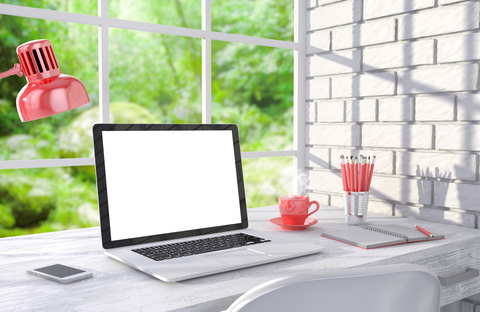 Many of us spend most of our waking hours in our workspace. Whether yours is an office, a workshop, a store, a restaurant or bar, or other facility, there are small tweaks you can make that will have a big impact on how you (and your staff) feel, and perform.
Many of us spend most of our waking hours in our workspace. Whether yours is an office, a workshop, a store, a restaurant or bar, or other facility, there are small tweaks you can make that will have a big impact on how you (and your staff) feel, and perform.
Three factors to consider are light, temperature, and noise.
Light
It’s been reported that 68% of employees have complained about the lighting in their offices. Having the right light is essential for a good work environment, so check:
- The amount of light. Dim work areas can cause headaches, drowsiness, and slow productivity. Make sure the amount of lighting is sufficient. Depending on the design of your workplace and the technology you use for lighting, you may be able to give employees control over the amount of their light.
- The type of light. Natural or artificial? Natural lighting is preferable because it not only produces sufficient brightness but also creates a feeling of wellbeing. You can’t have too many windows! But if you must use artificial light, avoid harsh lighting. Technology is continually improving on lighting options; just give lighting a thought before you make choices.
There’s a whitepaper that you can download from GE Lighting on finding office lighting solutions.
Temperature
Air temperature has a direct impact on productivity, according to Ergonomics. It’s a balancing act between comfort and cost when it comes to setting the thermostat at work. The Department of Energy’s optimal settings are 68º in the winter and 78º in the summer, but studies have shown that the optimal setting for productivity purposes is 70º to 73º. But what’s optimal for you?
Recognize that the answer may be different for each employee; some like it hot while others prefer cold. Allow employees to make their own accommodations if possible (e.g., a space heater under the desk for an employee who is always cold, as long as it is safe to do this). Also consider whether your business has particular temperature needs (e.g., medical offices generally are kept cooler than 78º in the summer).
In any event, you can save money by adjusting the thermostat when work areas are not in use (e.g., weekends, holidays), so you’ll save money then.
Noise
Noise can be distracting or, even worse, cause headaches and hurt productivity. Loud printers, air conditioners, and other equipment as well as street noise can be issues in your workplace. You have a problem if people have to raise their voice to speak with someone who is three feet away.
Take simple steps to minimize noise where possible by adding carpeting or rugs and acoustical ceiling tiles. Look into isolation products that block noises. Permit employees to wear their own noise canceling devices as long as it is appropriate in your workplace.
Depending on the nature of your business, background music may be appropriate as long as the sound is low. Background music is helpful for conducting confidential conversations and for providing ambience.
At construction sites and other places, high decibel levels can result in hearing loss, stress, and other physical maladies. OSHA has information about occupational noise exposure.
Find more about noise and open workspace from the Harvard Business Review.


